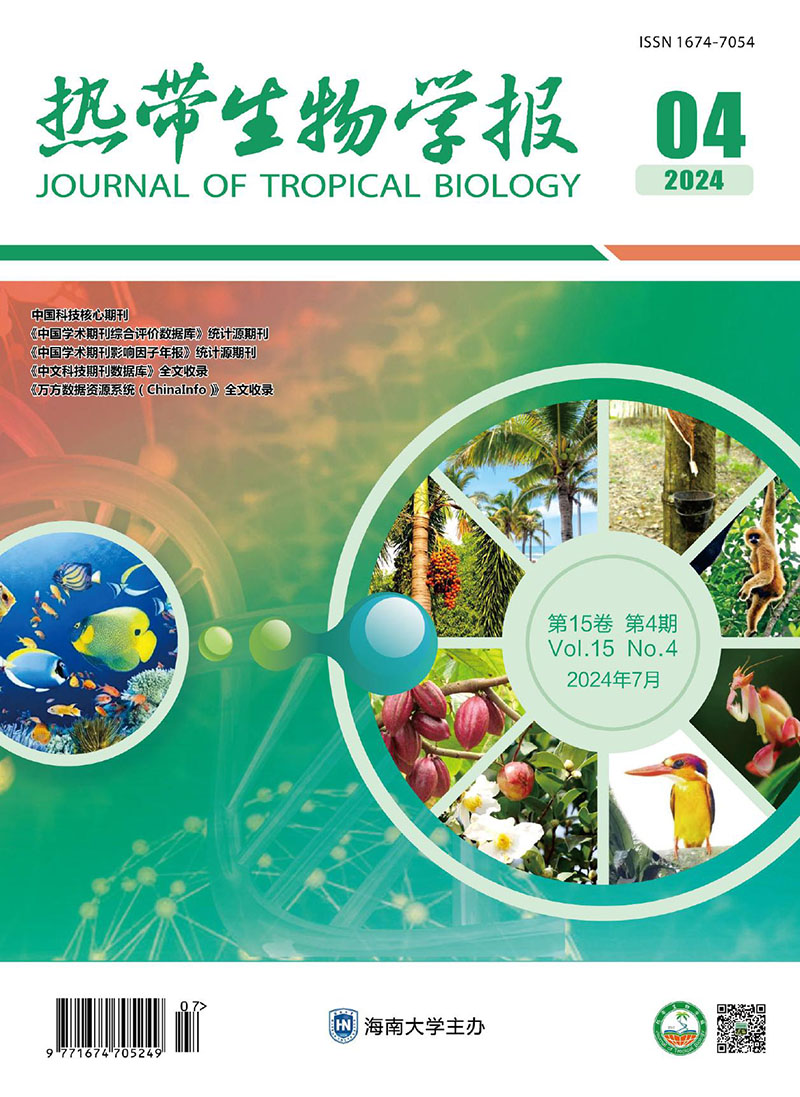|
[1]
|
洪秀杨,钟于秀,李伟芳,等.海南农田养分平衡状况及环境风险评价[J].植物营养与肥料学报, 2022, 28(11):2070-2081. |
|
[2]
|
|
|
[3]
|
ZHANG P, RUAN H, DAI P, et al. Spatiotemporal river flux and composition of nutrients affecting adjacent coastal water quality in Hainan Island, China[J]. Journal of Hydrology, 2020, 591:125293. |
|
[4]
|
黄晖,陈竹,黄林韬,等,中国珊瑚礁状况报告2010-2019[M].北京:海洋出版社, 2021:1-127. |
|
[5]
|
ZHANG C, JU X, POWLSON D, et al. Nitrogen surplus benchmarks for controlling N pollution in the main cropping systems of China[J]. Environmental Science&Technology, 2019, 53(12):6678-6687. |
|
[6]
|
赵永鉴,张博飞,张翀,等.海南典型稻菜轮作区和香蕉园氮磷盈余及土壤硝态氮累积[J].中国农业科学,2023, 56(15):2954-2965. |
|
[7]
|
中华人民共和国国家统计局.中国统计年鉴[M].北京:中国统计出版社, 2022. |
|
[8]
|
海南省统计局.海南统计年鉴[M].北京:中国统计出版社, 2022. |
|
[9]
|
武良,张卫峰,陈新平,等.中国农田氮肥投入和生产效率[J].中国土壤与肥料, 2016(4):76-83. |
|
[10]
|
中华人民共和国农业农村部.中国农业农村统计摘要(2022)[M].北京:中国农业出版社, 2022. |
|
[11]
|
肖玉林.中国蔬菜和果树氮素盈余指标的建立[D].海口:海南大学, 2023. |
|
[12]
|
杨小林,贺梦微,陈艺晏,等.丹江口库区大气氮干湿沉降动态变化特征研究[J].人民长江, 2022, 53(5):62-68. |
|
[13]
|
SMIL V. Nitrogen in crop production:an account of global flows[J]. Global Biogeochemical Cycles, 1999,13(2):647-662. |
|
[14]
|
XU Z, ZHANG X, XIE J, et al. Total nitrogen concentrations in surface water of typical agro-and forest ecosystems in China, 2004-2009[J]. PLoS One, 2014, 9(3):e92850. |
|
[15]
|
HE X, QIAO Y, LIU Y, et al. Environmental impact assessment of organic and conventional tomato production in urban greenhouses of Beijing city,China[J]. Journal of Cleaner Production, 2016, 134:251-258. |
|
[16]
|
CHEN X H, MA C C, ZHOU H M,et al. Identifying the main crops and key factors determining the carbon footprint of crop production in China, 2001-2018[J]. Resources Conservation and Recycling, 2021, 72:105661. |
|
[17]
|
ZHAO C, GAO B, WANG L, et al. Spatial patterns of net greenhouse gas balance and intensity in Chinese orchard system[J]. The Science of the Total Environment, 2021,779:146250. |
|
[18]
|
王孝忠.我国蔬菜生产的环境代价、减排潜力与调控途径[D].北京:中国农业大学, 2018. |
|
[19]
|
ZHAO H, LAKSHMANAN P, WANG X, et al. Global reactive nitrogen loss in orchard systems:a review[J].The Science of the Total Environment, 2022, 821:153462. |
|
[20]
|
IPCC. N2O emissions from managed soils, and CO2emissions from lime and urea application[C] //Agriculture, forestry and other land use. 2019 refinement to the 2006 IPCC guidelines for national greenhouse gas inventories, Geneva, Switzerland:IPCC,2019. |
|
[21]
|
WANG X, DOU Z, SHI X, et al. Innovative management programme reduces environmental impacts in Chinese vegetable production[J]. Nature Food, 2021,2:47-53. |
|
[22]
|
TEI F, DE NEVE S, DE HAAN J, et al. Nitrogen management of vegetable crops[J]. Agricultural Water Management, 2020, 240:106316. |
|
[23]
|
ZHOU J, GU B, SCHLESINGER W H, et al. Significant accumulation of nitrate in Chinese semi-humid croplands[J]. Scientific Reports, 2016, 6:25088. |
|
[24]
|
赵明炯,王孝忠,刘彬,等.长三角地区蔬菜生产的活性氮损失和温室气体排放估算[J].农业环境科学学报, 2020, 39(6):1409-1419. |
|
[25]
|
赵环宇.我国柑橘生产的环境代价及氮素优化措施研究[D].重庆:西南大学, 2023. |
|
[26]
|
ZHANG X, DAVIDSON E A, MAUZERALL D L, et al.Managing nitrogen for sustainable development[J].Nature, 2015, 528:51-59. |
|
[27]
|
SOUZA E F C, SORATTO R P, SANDAÑA P, et al. Split application of stabilized ammonium nitrate improved potato yield and nitrogen-use efficiency with reduced application rate in tropical sandy soils[J]. Field Crops Research, 2020, 254:107847. |
|
[28]
|
SAPKOTA T B, TAKELE R. Improving nitrogen use efficiency and reducing nitrogen surplus through best fertilizer nitrogen management in cereal production:The case of India and China[J]. Advances in Agronomy, 2023,178:233-294. |
|
[29]
|
EU NITROGEN EXPERT PANEL. Nitrogen Use Efficiency(NUE)an indicator for the utilization of nitrogen in food systems[EB/OL]. 2015, https://research. wur. nl/en/publications/nitrogen-use-efficiency-nue-an-indicatorfor-the-utilisation-of-n. |
|
[30]
|
SCHULTE-UEBBING L F, BEUSEN A H W,BOUWMAN A F, et al. From planetary to regional boundaries for agricultural nitrogen pollution[J]. Nature, 2022,610:507-512. |
|
[31]
|
ZHU X, ZHOU P, MIAO P, et al. Nitrogen use and management in orchards and vegetable fields in China:challenges and solutions[J]. Frontiers of Agricultural Science and Engineering, 2022, 9:386-395. |
|
[32]
|
HUDDELL A M, GALFORD G L, TULLY K L, et al.Meta-analysis on the potential for increasing nitrogen losses from intensifying tropical agriculture[J]. Global Change Biology, 2020, 26(3):1668-1680. |






 DownLoad:
DownLoad: